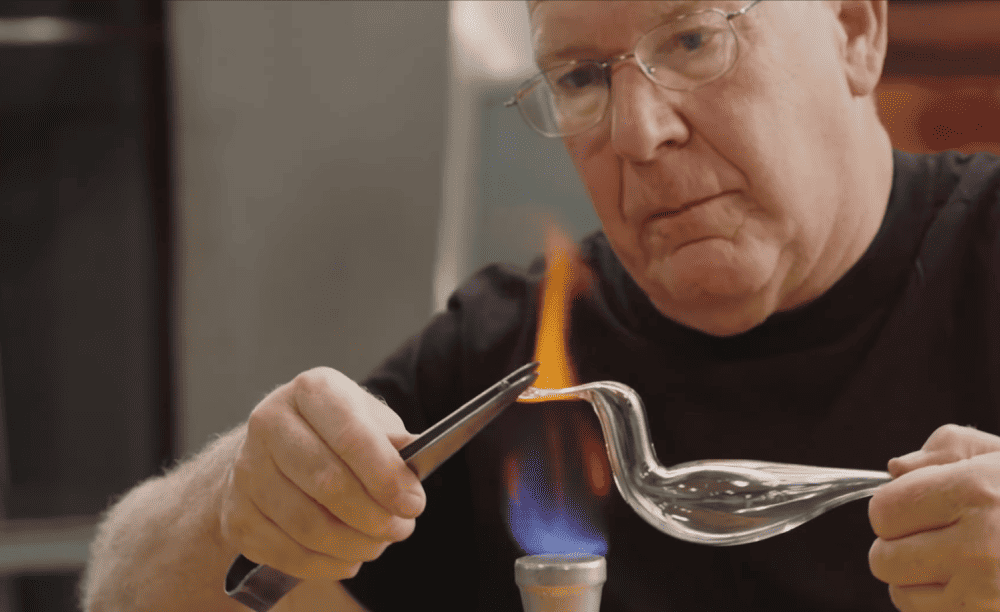
[Image above] Artist and scholar William Gudenrath demonstrates how the iconic Roman-period bird vessels were created. Credit: Corning Museum of Glass, YouTube
In October 2022, the Ceramic and Glass Industry Foundation launched a new program to educate middle and high school students about the fascinating world of ceramic and glass materials. Called the Glass Learning Opportunities Workshop (GLOW), this program involves bringing students to glass art studios to learn about and witness the ancient art of glassblowing.
Glassblowing is a glass-forming technique that involves inflating molten glass into a bubble with the aid of a blowpipe. The craft of glassblowing is believed to have originated in the 1st century BCE in the areas now known as Israel, Iran, Palestine, and Lebanon. However, ancient Rome is where glassblowing really took root and spread, with the Roman government establishing large glass workshops to form glass for both utilitarian and decorative purposes.
Rome’s significant influence on the craft of glassblowing warrants its close study even today. And thanks to a new freely available digital resource offered through the Corning Museum of Glass, anyone can learn about this history from the comfort of their home.
“The Techniques of Roman-Period Glassblowing” is the third digital publication by artist and scholar William Gudenrath. Gudenrath is recognized internationally as one of the foremost authorities on glassmaking techniques of the ancient world through the 18th century.
His first two electronic resources, released in 2016 and 2019, focused on the techniques of Renaissance Venetian and Venetian-style glassworking, respectively. These publications earned him the moniker of “glass detective” by the Associated Press.
The new digital publication on Roman glassblowing highlights the Roman-period innovations that laid the groundwork for modern glassworking. Gudenrath identified many of these innovations through reverse-engineering early glassblowing practices. For example, the video below shows the furnace glassblowing and flameworking processes used to create the iconic Roman-period bird vessels.
The Roman glassworking publication contains nearly twice as many long- and short-format videos as the previous publications on Venetian glassworking, with 53 in total. A visual index of objects provides direct links to most of the videos, though a few additional videos appear in the first chapter as well.
The publication is organized into seven chapters, starting with the history of glassblowing and then diving deeply into the creation of different types of glass objects, such as long-necked and short-necked vessels and compound objects (processes involving two conjoined bubbles). The objects are organized to reflect increasing complexity and difficulty, and as such “the publication can be used as a tutorial for an aspiring student of historical glassblowing,” Gudenrath writes in the introduction.
Access the full free publication and explore the decades of observation and experience it contains at this link.
